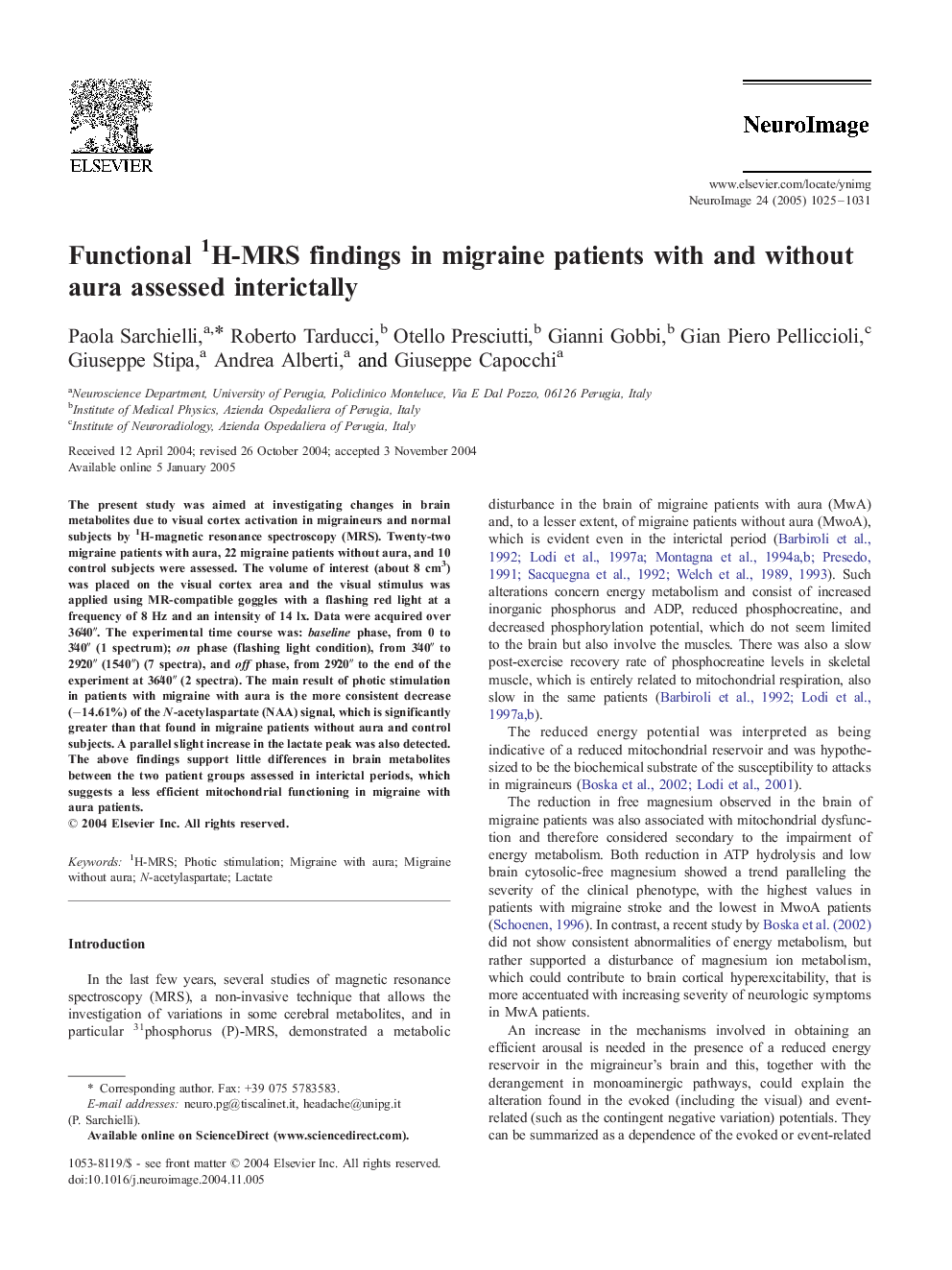| Article ID | Journal | Published Year | Pages | File Type |
|---|---|---|---|---|
| 9197935 | NeuroImage | 2005 | 7 Pages |
Abstract
The present study was aimed at investigating changes in brain metabolites due to visual cortex activation in migraineurs and normal subjects by 1H-magnetic resonance spectroscopy (MRS). Twenty-two migraine patients with aura, 22 migraine patients without aura, and 10 control subjects were assessed. The volume of interest (about 8 cm3) was placed on the visual cortex area and the visual stimulus was applied using MR-compatible goggles with a flashing red light at a frequency of 8 Hz and an intensity of 14 lx. Data were acquired over 36â²40ʺ. The experimental time course was: baseline phase, from 0 to 3â²40ʺ (1 spectrum); on phase (flashing light condition), from 3â²40ʺ to 29â²20ʺ (1540ʺ) (7 spectra), and off phase, from 29â²20ʺ to the end of the experiment at 36â²40ʺ (2 spectra). The main result of photic stimulation in patients with migraine with aura is the more consistent decrease (â14.61%) of the N-acetylaspartate (NAA) signal, which is significantly greater than that found in migraine patients without aura and control subjects. A parallel slight increase in the lactate peak was also detected. The above findings support little differences in brain metabolites between the two patient groups assessed in interictal periods, which suggests a less efficient mitochondrial functioning in migraine with aura patients.
Related Topics
Life Sciences
Neuroscience
Cognitive Neuroscience
Authors
Paola Sarchielli, Roberto Tarducci, Otello Presciutti, Gianni Gobbi, Gian Piero Pelliccioli, Giuseppe Stipa, Andrea Alberti, Giuseppe Capocchi,
